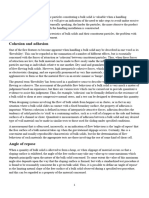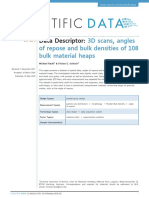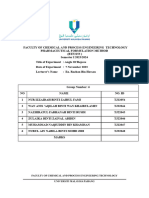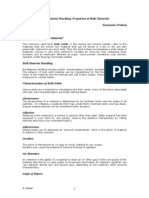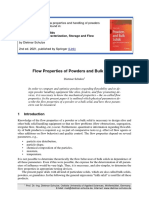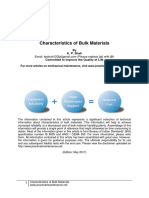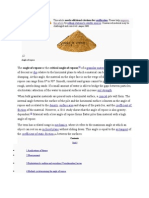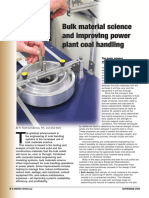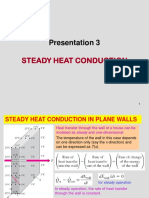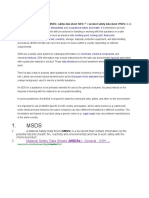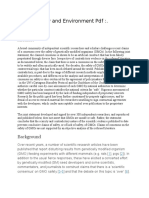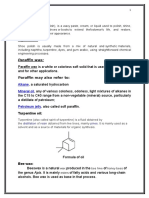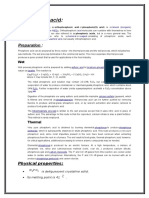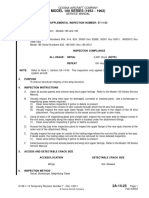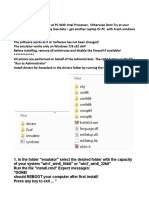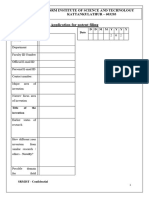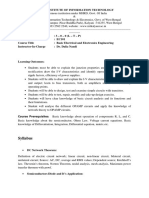0% found this document useful (0 votes)
52 views3 pagesCITATION MAS /L 1033
This document discusses bulk solids and the angle of repose, which is used to characterize the flow properties of granular materials. The angle of repose is defined as the steepest angle at which a heap of unconsolidated granular material remains stable. There are various methods for measuring the angle of repose, but the value depends on both the material properties and the specific test procedure used. One common test method involves filling a hollow cylinder with granular material and measuring the angle formed when the cylinder is lifted and the material flows out to form a stable heap.
Uploaded by
hussainCopyright
© © All Rights Reserved
We take content rights seriously. If you suspect this is your content, claim it here.
Available Formats
Download as DOCX, PDF, TXT or read online on Scribd
0% found this document useful (0 votes)
52 views3 pagesCITATION MAS /L 1033
This document discusses bulk solids and the angle of repose, which is used to characterize the flow properties of granular materials. The angle of repose is defined as the steepest angle at which a heap of unconsolidated granular material remains stable. There are various methods for measuring the angle of repose, but the value depends on both the material properties and the specific test procedure used. One common test method involves filling a hollow cylinder with granular material and measuring the angle formed when the cylinder is lifted and the material flows out to form a stable heap.
Uploaded by
hussainCopyright
© © All Rights Reserved
We take content rights seriously. If you suspect this is your content, claim it here.
Available Formats
Download as DOCX, PDF, TXT or read online on Scribd
/ 3



